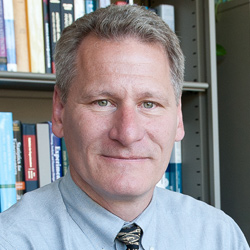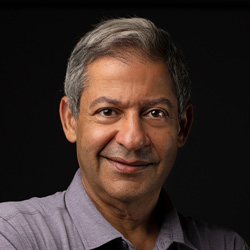Design and Engineering Intersect in New Event Series
The series hosted by Segal Design Institute creates connections between design and engineering
Design and engineering are overlapping disciplines that fundamentally aim to address human needs. These needs, and the design and engineering processes that work to address them, were the focus of a new seminar series hosted by Segal Design Institute.
Design at the Intersections, which began in October, brought together faculty from Northwestern Engineering who exchanged ideas and sparked interdisciplinary connections between their work. The talks, given collaboratively by pairs of faculty members, will continue in winter 2022.
“A culture thrives at the intersection of its parts,” said Julio M. Ottino, dean of the McCormick School of Engineering. “A more cross-linked network is a good thing. The idea of these talks is to communicate ideas and to expand your thinking space.”
During the first three talks in the series, discussion topics ranged from design-engineering team experiences to human-machine relationships to data-driven network science and preference modeling.
Design Stories
On October 14, Michael Peshkin, professor of mechanical engineering and Allen K. and Johnnie Cordell Breed Senior Professor of Design, and David Gatchell, director of the Manufacturing and Design Engineering (MaDE) program, shared stories about their experiences working with teams of students and researchers on human-centered design problems.

“One of the things that we do within McCormick is we give students the opportunity to take ownership of knowledge,” Gatchell said. “There is something about working on projects where when you care about that project, the knowledge that you gain and apply and transfer you own.”
One story was about finding a better way to clean up broken glass.

People have a hard time finding all the shards and might not be able to pick them all up, Gatchell said. During the first capstone year of MaDE, students unpacked this problem by identifying stakeholders and their needs, benchmarking environments where glass is typically used and broken, and testing various clean-up methods based on these parameters. The MaDE team’s prototype incorporated a blue LED light into a hybrid vacuum plus dustpan.
What I love about that story is how the students started out in our needs-finding design process that we teach here, and before very long they're lost in mold flow and cooling rates and design for assembly. That's beautiful to me. Professor of Mechanical Engineering
Peshkin also shared a story from his time with Kinea Design, a rehabilitation robotics company he cofounded. Peshkin asked the audience to consider whether there is a role for robots in physical therapy, what might go wrong with robots assisting with stretching and exercises, and how frequently trust is an important issue in human-centered design.
Kinea engineers examined these questions and concluded that humans are more comfortable with machines that help them but do not fill the role of a physical therapist. The result: the KineAssist, a device that assists both patients and clinicians by helping patients take balance risks but not actually fall.
Human-Machine Relationships
On October 20, Professors Bruce Ankenman and Todd Murphey discussed how humans and machines need to be able to communicate with each other, sometimes using nonverbal and emergent aspects of communication, and must leave flexibility for the human.

“What makes human relationships work and grow is love, or the compassion that allows you to give your heart, skills, knowledge, time, effort, reputation, and strength for the benefit of another or others,” said Ankenman, Bette and Neison Harris Professor of Teaching Excellence and professor of industrial engineering and management sciences.
In the context of human-machine relationships, compassion might look like the ability of a machine to help humans, Murphey said. Part of the Center for Robotics and Biosystems and whose research includes human-machine interaction in biomedical devices, Murphey shared examples of physical human-robot interactions in the context of assistance and rehabilitation.

Data-Driven Network Science
On November 15, Professors Wei Chen and Noshir Contractor discussed how they each use network science to support design preference modeling and build effective teams.

Chen, Wilson-Cook Professor in Engineering Design and professor and chair of mechanical engineering, shared her design research journey, which has focused on design under uncertainty and decision-based design. She discussed how product design is part of a complex sociotechnical system that involves customer preferences and attributes, market competitors, social media and network influences, and institutional environments.
“In my work I’m interested in how we consider the designer’s preference and customer preference to support engineering decision-making,” Chen said. “If we view this as a complex system, we see it as a dynamic system that continuously changes due to uncertainty as well as emerging behaviors.”

The work, which uses a predictive model of group behavior to understand and anticipate the effects of isolation and confinement, analyzes team dynamics pre-mission and during mission, and sometimes re-pairs crews.
“Taking all the understanding we have about social systems and networks can be used to move from understanding to design,” Contractor said.